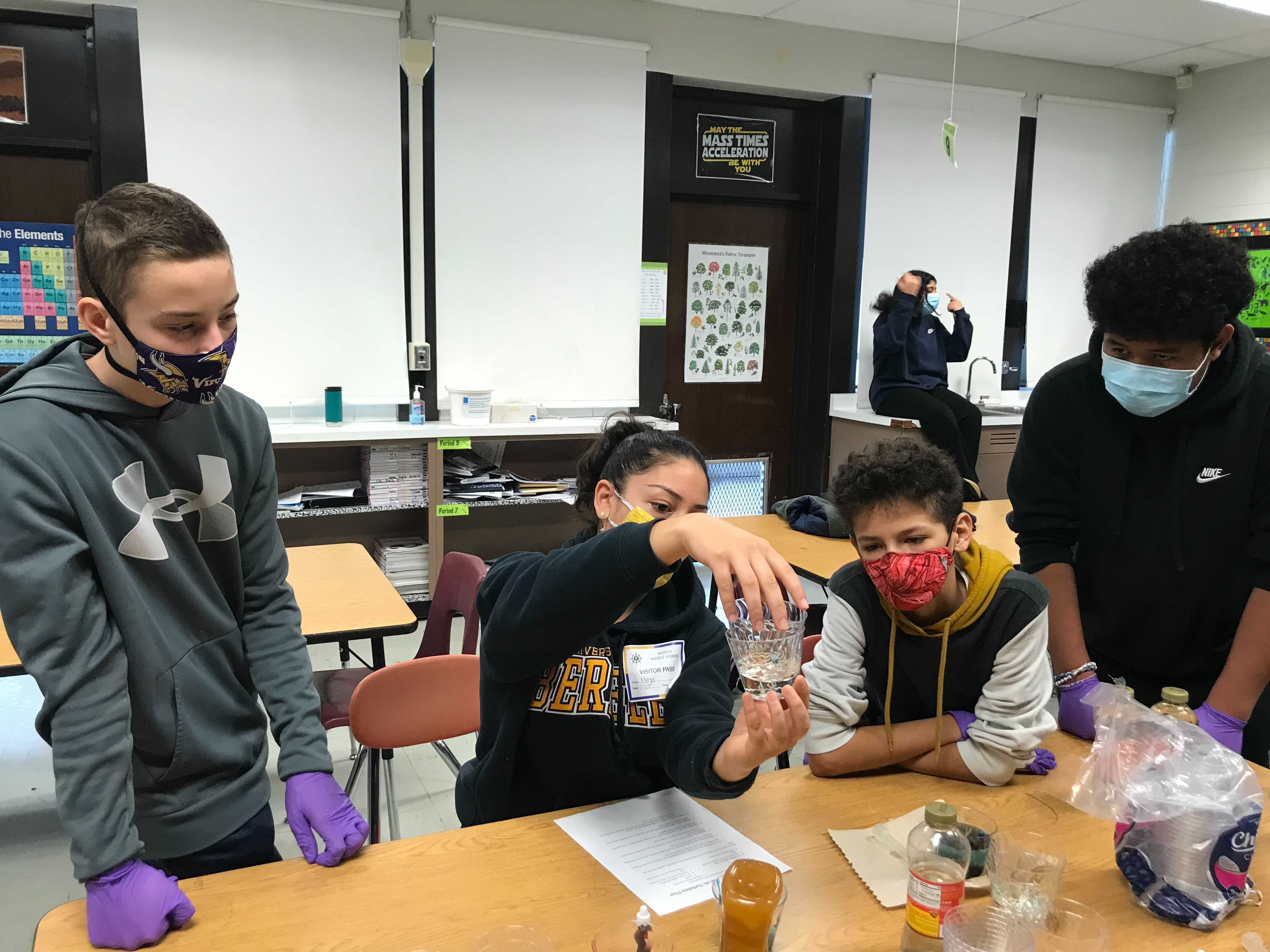Experiment leaders: Daniel and Matt
Over the last two hundred years, the study of fluid mechanics has been one of the core foundations of engineering progress. Everything from fruit juice to personal care products to the air in the atmosphere has been studied through this lens to improve people’s lives. On December 16th, 2021, Mrs. Michelle Ross’s 6th grade astronomy class at Murray Middle School learned about some basic properties of fluids and their movement patterns. The objective of this lesson was to teach students about fluid viscosity and the difference between laminar and turbulent flow and, through activities, give them a hands-on look at how these properties generate useful and interesting effects in fluids they might encounter in everyday life.
Daniel began the presentation to the students. First, fluids were defined as liquids and gases, the phases of matter that continuously deform to take the shape of their container. To pique interest, examples of fluid mechanics at work in space exploration were offered, including fuel dynamics during combustion and aviation forces such as lift and drag. Then, viscosity was introduced as how “thick” a fluid is, and the comparison of honey (more viscous) and water (less viscous) gave students a real-life example of how to identify viscosity differences. In order to prepare the students for the activity, the definition of viscosity was re-cast in terms of resistance to flow. Newtonian fluids, for which the resistance-movement (stress-strain) relationship is constant, were contrasted with non-Newtonian fluids, for which this relationship can change and create interesting behaviors. Examples of both shear-thinning (paint, whipped cream, ketchup) and shear-thickening (cornstarch/water mixture) fluids, as well as a discussion of what it might be like to swim in a pool of these fluids, gave the students a physical sense of these properties.

Matt presented the second half of the content, which dealt with flow patterns. The two types of fluid flow, laminar and turbulent, were introduced with the analogy of people walking in either slow, single- file lines (laminar) or running in a chaotic footrace (turbulent). The relevant physical parameters in the Reynolds number were briefly explained, leading to the bottom line that more viscous fluids moving more slowly through smaller spaces led to less chaos and more “single-file” fluid flow. Importantly, the students were shown how much fluids would mix in these two regimes based on what would happen if the people walking or running were told to stop immediately. A laminar flow could stop with little to no inertia, while a turbulent flow would cause swirling and mixing even after the fluid was stopped due to its inertia. Finally, the students were posed the question of what would happen in a laminar flow with a colored droplet that could be stirred one way and back the other way.
The students then split into groups to complete the activities. Experiments with non-Newtonian fluids were spread across two stations. At the first station, students extruded shear-thinning fluids including wound-care gel and silicone putty through various syringe nozzles. The shear-thinning nature enabled them to draw pictures with the fluids, which stopped moving after extrusion onto the paper. Additionally, the effects of pressure buildup at the nozzle outlets based on the zero-shear viscosity of the two fluids were very evident – the thinnest nozzles popped off the syringe with the silicone putty! At the second station, students played with a shear-thickening fluid in the form of a cornstarch/water suspension. Depending on how quickly they deformed the suspension, it behaved either as a liquid or a solid. Many students had fun punching the liquid to feel its solid-like response.
The second activity put to life the laminar flow scenario described at the end of the presentation. A makeshift parallel plate rheometer was created by pouring corn syrup (very viscous) into a clear plastic cup, injecting a small dot of food-colored corn syrup beneath the surface, and nesting another cup on top of the liquid. By twisting the top cup slowly, students sheared the fluid and smeared out the colored drop in laminar flow. If they twisted the same number of times backward as they did forward, the fluid would de-mix, and the droplet would come back together! However, if they twisted too quickly, some turbulent character was introduced, and the droplet would still be smeared after reversing the deformation.